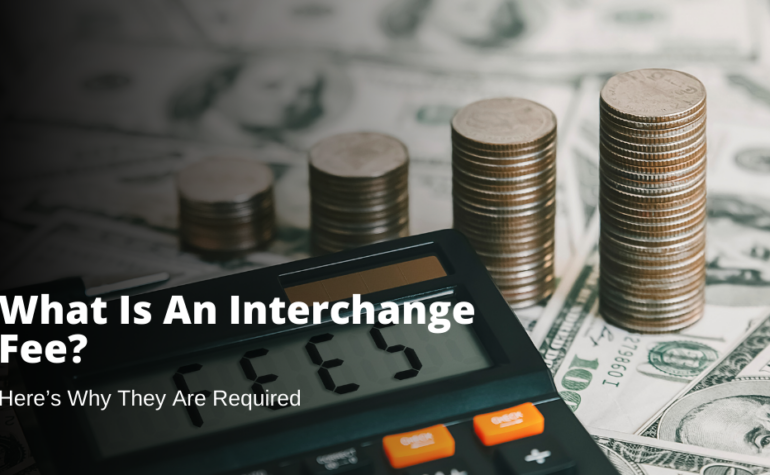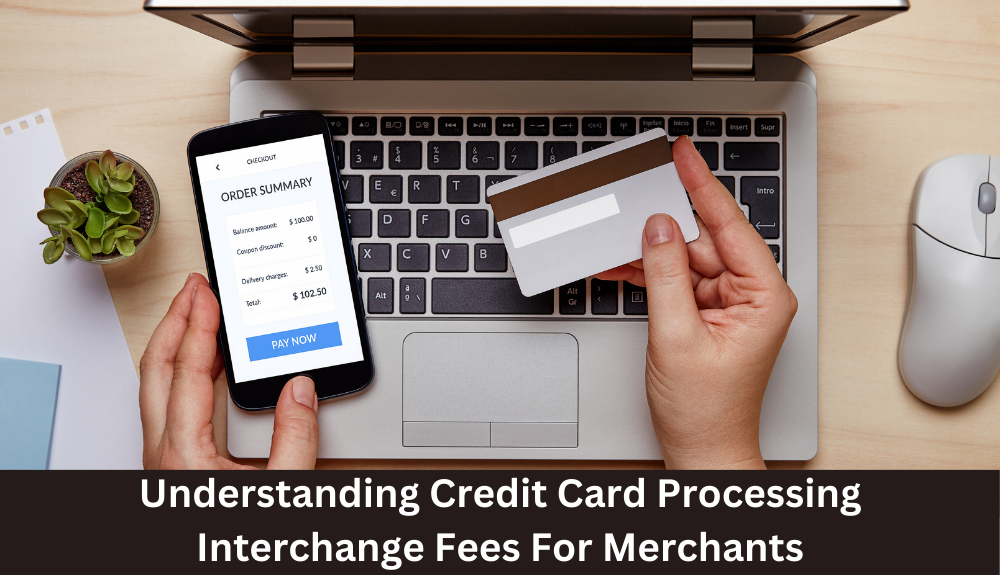Best Credit Card Processing Solutions Tailored for Every Industry

By merchantservices March 12, 2024
Have you ever wondered how credit card transactions seamlessly move from swiping a card to finalizing a purchase? Enter interchange fees – the often overlooked yet integral component of the payment processing ecosystem. These fees play a crucial role in ensuring that every time you make a card payment, a complex system effortlessly handles the transaction behind the scenes.
In our upcoming blog, “What Is An Interchange Fee? Here’s Why They Are Required,” we’ll delve deep into the world of credit card processing to demystify interchange fees. From unraveling the concept to understanding their significance in the broader payment landscape, this comprehensive guide will provide a clear roadmap for businesses looking to optimize their transaction processes.
Throughout the blog, we will address common pain points faced by businesses in navigating interchange fees and shed light on:
– The fundamentals of interchange fees and their impact on credit card transactions.
– Factors influencing interchange rates for different types of cards and transactions.
– Strategies to reduce interchange fees and enhance card acceptance rates.
Stay tuned as we unveil the essential insights you need to master the intricacies of interchange fees and empower your payment processing strategies.
How Much Does Interchange Cost?
Interchange fees play a significant role in credit card processing, impacting both merchants and customers. Understanding the cost structure of interchange fees is crucial for businesses to optimize their payment processing. Here’s an overview of how interchange fees are determined and their impact on merchants:
The Factors That Determine Interchange Rates
Interchange rates are influenced by several key factors, including:
1. Card schemes: Different card networks, such as Visa, Mastercard, and American Express, have their own sets of interchange rates.
2. Card type: Whether it’s a credit card or a debit card affects the associated interchange rates.
3. Transaction type: Interchange rates can vary depending on whether the transaction is conducted in-person (card present) or online (card not present).
4. Merchant category code: The nature of the business being operated can impact the interchange rates.
5. Security protocols used: The level of security measures implemented by the merchant can influence the interchange rates.
6. Country of transaction: Interchange rates may differ across countries due to varying regulations and market conditions.
7. Where the card was issued: The location of the card issuer can also affect interchange rates.
Examples of Common Interchange Rates
Interchange rates are not fixed and can vary. Here are some illustrative examples of common interchange rates:
– For a retail transaction using a Visa credit card, the interchange rate might be around 1.5% plus $0.10 per transaction.
– In contrast, an online transaction using a Mastercard debit card may have an interchange rate of 1% plus $0.20 per transaction.
Please note that these rates are for illustrative purposes only, and actual rates can vary based on specific circumstances. It’s important for merchants to review and understand their specific interchange fees to effectively manage their payment processing costs.
By grasping the factors that influence interchange rates, businesses can make informed decisions to optimize their payment processing and ultimately enhance their financial performance.
Understanding Credit Card Processing Interchange Fees For Merchants

Interchange fees play a vital role in credit card processing, impacting the overall cost structure for businesses. As a merchant, it is essential to have a clear understanding of how these fees work and their impact on your payment processing. This section will provide valuable insights into credit card interchange fees, helping you navigate the complex world of merchant processing.
Merchant Processing Fees
When a customer makes a credit card payment, several fees are involved in the transaction process. Interchange fees are just one component of these merchant processing fees. Alongside interchange fees, merchants may also incur additional payment processing fees such as authorization fees, chargeback and retrieval fees, pre-arbitration fees, voice authorization fees, debit fees, wireless fees, equipment lease fees, app subscription fees, and monthly fees.
Definition of Interchange Rates and Fees
Interchange rates are the fees charged by credit card networks, such as Visa, Mastercard, or American Express, for facilitating transactions. These rates vary depending on various factors, including the type of card, type of transaction, merchant category code, security protocols used, the country of the transaction, and where the card was issued.
What Factors Dictate the Interchange Rate?
Interchange rates are determined by card networks based on a variety of factors. These include the risk associated with the transaction, card type (credit or debit), payment processor used, and rewards programs offered by the card issuer. Understanding these factors can help businesses optimize their card acceptance strategies.
How Much Are Interchange Fees?
Interchange fees can vary significantly based on the factors mentioned above. For example, a typical interchange fee for a card-present transaction might be lower compared to a card-not-present transaction due to the increased risk of fraud. Similarly, the interchange fee for a high-value transaction can be higher compared to a lower-value transaction. It is crucial for merchants to analyze their transaction patterns and understand the specific interchange rates applicable to their business.
Interchange-Plus Pricing
Interchange-plus pricing is a transparent pricing model that separates the interchange fee from other payment processing costs. With this pricing structure, merchants pay the actual interchange rate set by the card networks, plus a fixed markup or percentage fee charged by the payment processor. This allows businesses to have a better understanding of the actual interchange costs involved in their transactions.
Flat-Rate Pricing
Flat-rate pricing is another pricing model commonly used in credit card processing. Unlike interchange-plus, flat-rate pricing combines all fees into a single, fixed rate. While this model simplifies the fee structure for merchants, it may not always be the most cost-effective option, especially for high-volume businesses.
Tiered Pricing Model
The tiered pricing model categorizes transactions into different tiers or levels, each with its own associated rate. These tiers are usually determined based on the perceived risk and qualification criteria set by the payment processor. While this model offers simplicity, it can often lead to higher costs for businesses due to the lack of transparency in interchange rates.
Understanding the intricacies of interchange fees and different pricing models is crucial for optimizing payment processing and minimizing costs. By evaluating your business’s transaction patterns and choosing a pricing model that aligns with your needs, you can effectively manage interchange fees and streamline your payment acceptance process.
What are interchange fees? How do they work?
Interchange fees play a vital role in credit card processing, impacting both merchants and consumers. These fees are set by card networks like Visa, Mastercard, and American Express, and are charged to merchants for every credit or debit card transaction they accept.
Interchange fees serve multiple purposes. First and foremost, they help cover the costs associated with processing transactions, including fraud prevention measures and system maintenance. Additionally, these fees help fund rewards programs offered by credit card issuers, incentivizing consumers to use their cards.
Interchange rates are determined by various factors, such as the type of card being used (credit or debit), the card brand, the transaction type (card present or not present), and the merchant category code. Additionally, the security protocols used, the country of the transaction, and where the card was issued can also influence the interchange rate.
It’s important to note that interchange fees are typically paid by the merchant, not the consumer. However, these fees can indirectly impact consumers through higher product costs or the exclusion of certain payment methods.
When it comes to pricing models, Checkout.com offers interchange++ pricing. This model separates the interchange fee from the markup fee, providing transparency and allowing merchants to see the actual interchange cost.
Understanding interchange fees is essential for merchants in optimizing payment processing strategies and managing costs effectively. By having a clear understanding of how these fees work and the factors that influence them, businesses can make informed decisions to reduce interchange fees and improve their overall payment processing efficiency.
Who is who in Card Payments?

In the world of card payments, various parties play different roles to ensure smooth transactions. Understanding the key players involved can help businesses navigate the intricacies of interchange fees. Here’s an overview of the important entities in the card payment ecosystem:
1. Cardholder:
The cardholder is the individual or entity that holds the credit or debit card. They initiate the payment process by using their card to make a purchase.
2. Issuing Bank:
The issuing bank is the financial institution that provides the cardholder with the credit or debit card. They are responsible for issuing the card and facilitating transactions on behalf of the cardholder.
3. Card Network:
Card networks, such as Visa, Mastercard, American Express, and Discover, act as intermediaries between the cardholder, the merchant, and the issuing bank. They provide the infrastructure that enables transactions to occur securely and efficiently.
4. Merchant:
The merchant is the business or individual that accepts card payments. They provide goods or services to the cardholder and receive payment through their payment processing system.
5. Payment Processor:
The payment processor is a company that handles the technical aspects of processing card payments. They facilitate the communication between the merchant, the card network, and the issuing bank to authorize and settle transactions.
6. Acquiring Bank:
The acquiring bank, also known as the merchant bank, is the financial institution that establishes and maintains the merchant’s account to accept card payments. They provide the necessary services and infrastructure for the merchant to process card transactions.
7. Payment Service Provider (PSP):
A payment service provider is a third-party company that offers a range of services to merchants, including payment processing, fraud prevention, and reporting. They act as an intermediary between the merchant and the acquiring bank.
Understanding the roles of these entities is essential for businesses to navigate the complexities of interchange fees and ensure a seamless payment process. By working with trusted partners and optimizing their payment processing, businesses can effectively manage their costs and provide a convenient payment experience for their customers.
What Is An Interchange Fee? How It Impacts Credit Card Transactions
Interchange fees play a crucial role in the world of credit card processing, ensuring smooth transaction processes. But what exactly are interchange fees, and why are they required? Let’s dive in and explore.
Understanding Interchange Fees
Interchange fees refer to the fees charged between the merchant’s acquiring bank and the cardholder’s issuing bank for every credit card transaction. These fees are set by the card networks, such as Visa, Mastercard, and American Express, and they help cover the costs associated with card payment processing and network maintenance.
The Impact on Credit Card Transactions
Interchange fees are necessary for several reasons. Firstly, they enable the functioning of an intricate payment ecosystem, where various stakeholders ensure the smooth transfer of funds between buyers and sellers. By charging interchange fees, card networks incentivize financial institutions to participate in this system and offer credit card services to consumers.
Secondly, interchange fees contribute to the security and reliability of credit card transactions. They provide insurance against fraudulent activities and protect consumers and businesses from financial losses.
Lastly, interchange fees play a significant role in the funding and maintenance of the card networks themselves. These networks invest in technological advancements, infrastructure, and security measures to continually improve the credit card payment system.
In summary, interchange fees are vital for the seamless operation of credit card transactions, ensuring security, reliability, and ongoing developments in payment technology. Understanding these fees is essential for any business venturing into credit card processing to optimize their payment acceptance strategies.
